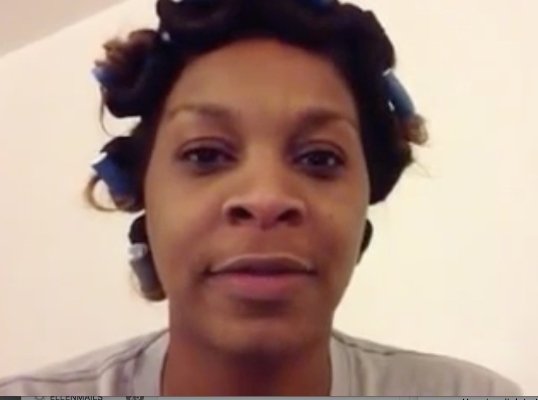![]() The opening of this alternatively expansive and intimate documentary includes a video blog entry by Sandra Bland, in which she opines about the Black Lives Matter movement. It’s darkly ironic hearing her talk about the tragedy of young African Americans being killed by police officers they’ve surrendered to, knowing what happens to her. On July 10, 2015, the 28-year-old was found dead in a Harris County, Texas, jail cell following an arrest on questionable charges. Though the local medical examiner deemed it suicide at the time, questions persist as to exactly what happened to her while in custody.
The opening of this alternatively expansive and intimate documentary includes a video blog entry by Sandra Bland, in which she opines about the Black Lives Matter movement. It’s darkly ironic hearing her talk about the tragedy of young African Americans being killed by police officers they’ve surrendered to, knowing what happens to her. On July 10, 2015, the 28-year-old was found dead in a Harris County, Texas, jail cell following an arrest on questionable charges. Though the local medical examiner deemed it suicide at the time, questions persist as to exactly what happened to her while in custody.
Then the film cuts to Bland’s surviving family, with a focus on her mother, Geneva Reed-Veal, and sister Sharon, who recall their initial trip to Houston to claim Sandra’s body. According to them, any answers given to them by Harris County officials only created more suspicion of foul play. For example, the jail is fitted with cameras except for where Sandra was being held, making it impossible to see what transpired in the hours before her body was found, and the security footage itself has no time stamp. Sandra also apparently tied what her sister judges to be a “perfect” noose, despite claiming to be in severe pain when they last spoke over the phone.
Meanwhile, looming over everything is a bystander’s video of Bland’s arrest at the hands of State Trooper Brian Encinia, who can be seen throwing her to the ground violently. Partially glimpsed early on, the preview actually pales in comparison to the uncut video of the entire incident, taken by the officer’s dashcam, in which a verbal altercation escalates to his threatening to use his Taser before he drags her out of the vehicle. This is presented in its entirety, one of several touches by directors Kate Davis and David Heilbroner that feel uncomfortably voyeuristic, along with allowing us to see Bland’s lifeless body hanging from her cell.
From there, the narrative follows two tracks: the family’s ongoing fight for answers regarding the strange circumstances of Sandra’s death and the growing number of protests occurring across the United States in her name. The filmmakers interview a varied cross section of activists who describe Bland as the first female police shooting victim who has resonated with the larger public, and the sheer number of rallies, marches, and vigils leaves an impression of how important her story is.
The film also succeeds at painting a fully-dimensional picture of Bland before her untimely death, largely through her social media videos. Through them, we get the impression of her as very much engaged in the sad state of race relations in modern-day America. In her video blog, “Sandy Speaks,” she regularly confronted issues such as police brutality and called out everyone to do better. We also see how proud Bland was of her heritage through her reporting from historically significant sites around Chicago. Meanwhile, from her mother, sister, and other relatives, we get a sense of her strong sense of morals, which led to her giving up a well-paying job at a large company because of its ties to the prison industry.
There are other, darker details about Bland’s life that come up as well, which Harris County officials utilize in what amounts to an all-out PR war to exonerate themselves. Both the county sheriff’s department and district attorney’s office publicly claim to want justice for Bland’s family, but behind the scenes, their actual behavior hints at indifference. For their part, the filmmakers go to great lengths to imply that not everyone on the county’s side is necessarily acting in bad faith, but in the end, their actions on the whole lean heavily toward victim-blaming and smearing, overwhelming any reasonable argument otherwise.
Say Her Name: The Life and Death of Sandra Bland works on multiple levels: as a quest for truth set in the real world, a portrait of a burgeoning civil rights activist cut down in her prime, and as a snapshot of the country at a time of highly volatile racial tensions. It tries to be as fair-minded as possible to all sides, though not at the expense of sincerely mourning a tragic loss of life, while capturing the widespread outrage over the fact that it occurred in the first place.

















Leave A Comment